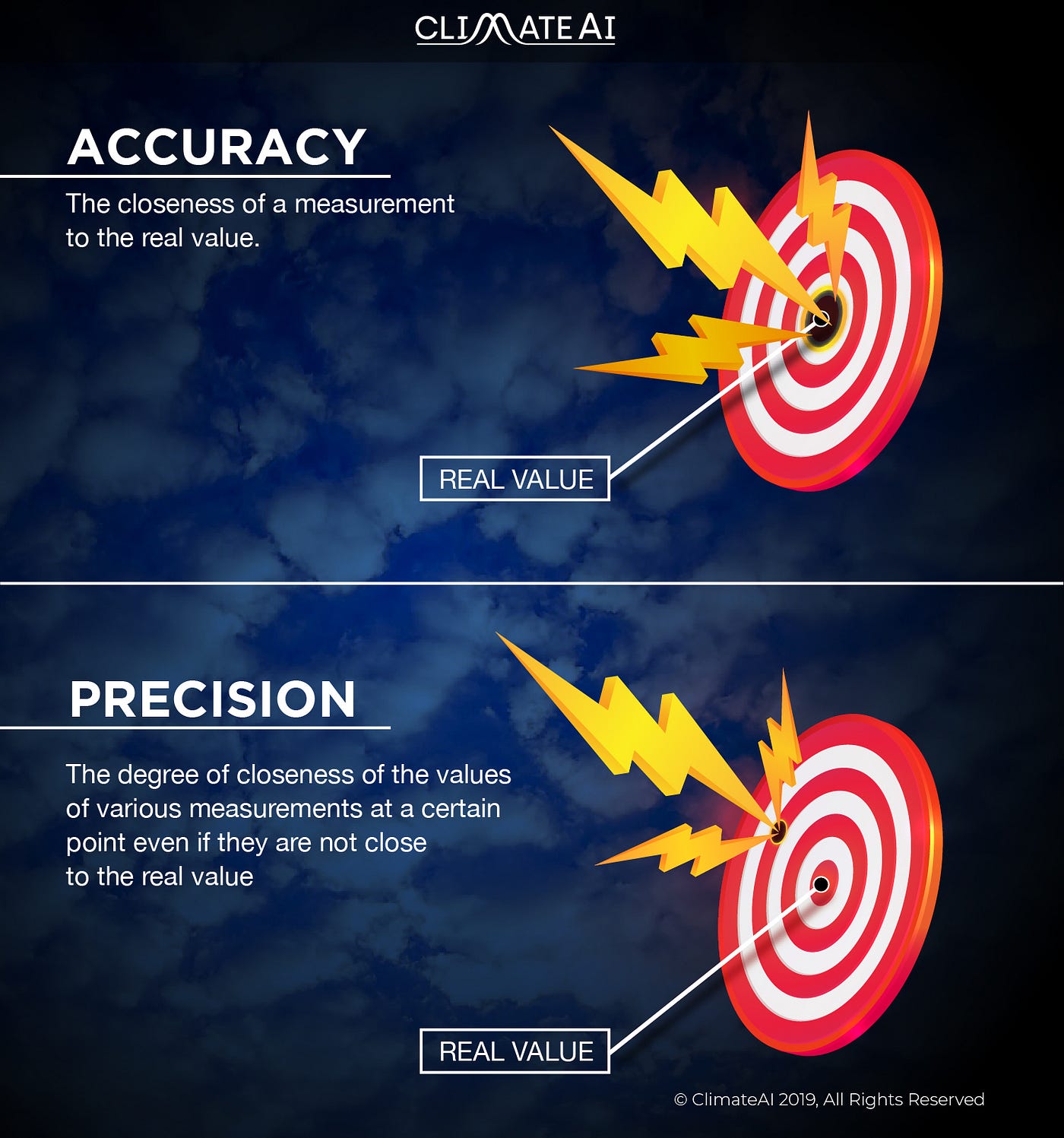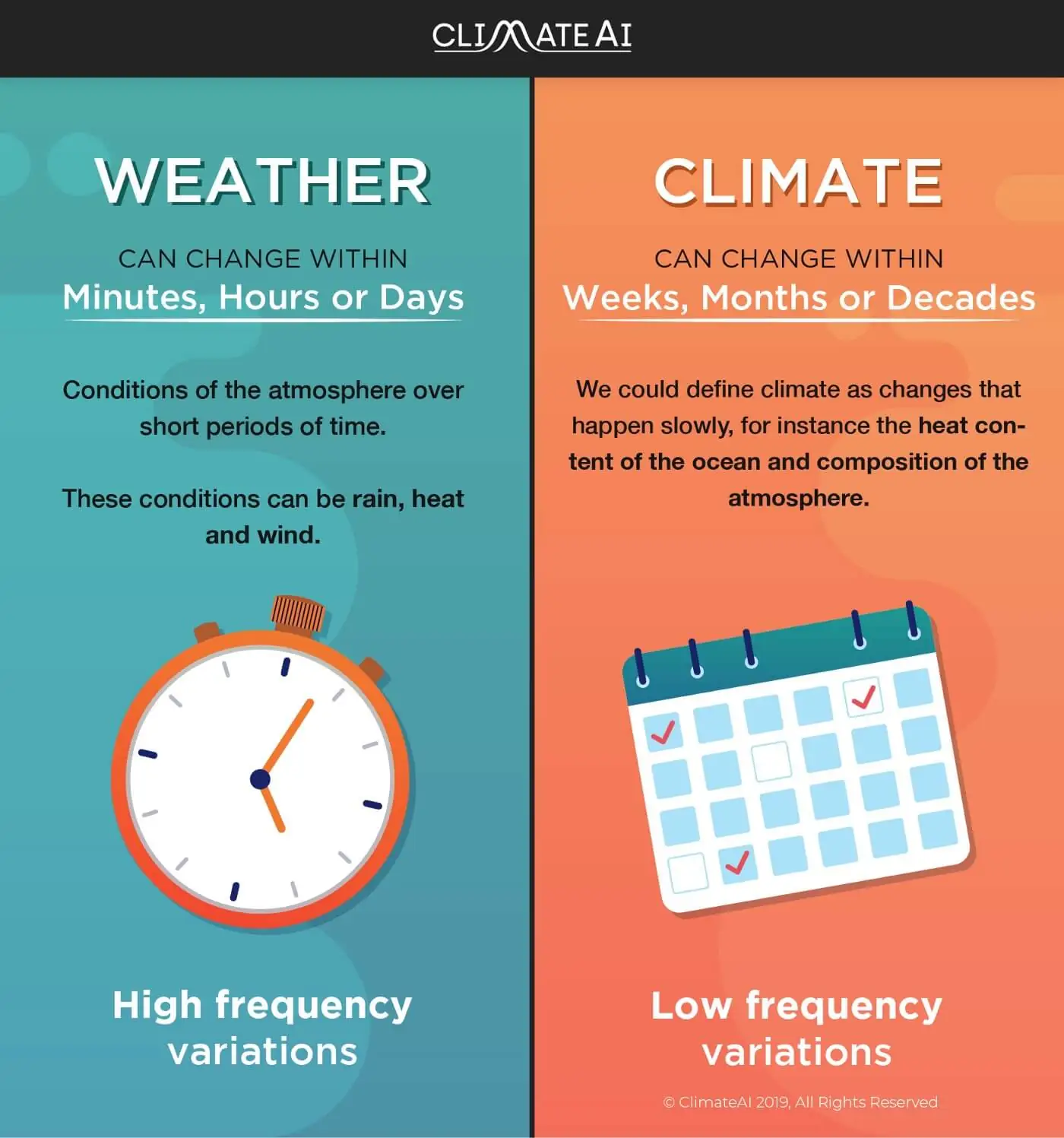Climate, on the other hand, is the low-frequency variations in the global atmospheric systems. We can think of changes that happen slowly, like the heat content of the ocean and composition of the atmosphere. Therefore, climate is measured in months, years, and even decades.
Another good example of these low-frequency variations is the global warming signal, which is an increase in global temperature as measured by decade-long mean temperatures. When we see a record in temperature being set, e.g. a particularly hot day, it is a result of climate and weather working together that made such a day happen.
To create weather forecasts, we need to study the atmosphere as the movement of the wind and air that largely determines our weather patterns. On the other hand, to forecast a seasonal climate, we need to study the ocean as our large water masses store heat (and energy) for months and determine our seasonal climate. El Niño, the Atlantic Oscillation, and Pacific Oscillation are all ocean teleconnections that determine the climate and work on monthly to seasonal timescales. Thus our study of seasonal forecast needs to match the monthly timescales of the physical processes that drive them.
There is a second reason: When we interpret seasonal forecasts, we use monthly averages rather than daily or hourly averages due to the precision/accuracy tradeoff. For example, I can tell with incredibly high accuracy (≈99.9%), that the average global temperature in the next 20 years will be higher than the last 20 years. This example is a very accurate forecast, but not a precise forecast on a decadal and global scale. At least not precise enough to be useful. At the other end of the spectrum, I can say that the next 4th of July in San Francisco will be 0.2 degrees warmer than last year. This would be an incredibly precise but very inaccurate forecast, only marginally better than a guess.

You can gain accuracy by making broader predictions and gain precision by making narrower weather forecasts. For instance, saying what the average temperature will be for next week is going to be a more accurate prediction than a 13-day hourly forecast of temperature. This happens because the small weather-driven changes that occur day to day (or within small regions) cancel out when you average them over longer periods of time (or over larger regions) and results in more accurate if less precise information.
How ClimateAi Approaches Weather Forecasts and Climate Forecasts
We at ClimateAi go to great lengths to find the right tradeoff between precision, accuracy, and customer needs. For example, we would never say “this same Tuesday next year will be 4 degrees warmer” — that would be too much precision without accuracy. Instead, we focus on cumulative metrics such as probability distributions, which tell us the days below freezing temperature over a season and can help agronomists on the expected heat risk three months out. We focus on forecasting the probability distribution function of daily temperatures in seasonal timescales, but do not forecast any individual day.
We are fighting the misconception that, “climate forecasting is hard because weather forecasting is limited to 1 or 2 weeks.” The problem is rather communicational and not technical. We have a rule of thumb for forecast usefulness, defining usefulness as the right tradeoff between precision, accuracy, physical processes and end-customer needs. Daily averages are useful up to 7 days out, weekly averages are useful 5 weeks out, monthly averages are useful 6 months out, yearly averages would be useful 5 years out. If you want to understand the impact of El Nino 6 months out on daily temperatures, you need to work with daily distributions for a given month rather than a specific day.
We work within these limits to build tools for weather and climate analysis that have the most use for society. We work hard to communicate the differences between using weather forecasts and climate forecasts.
